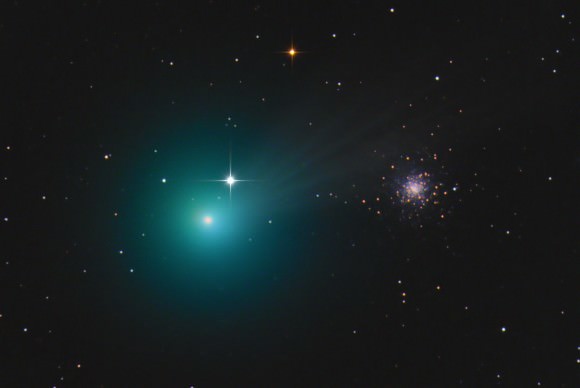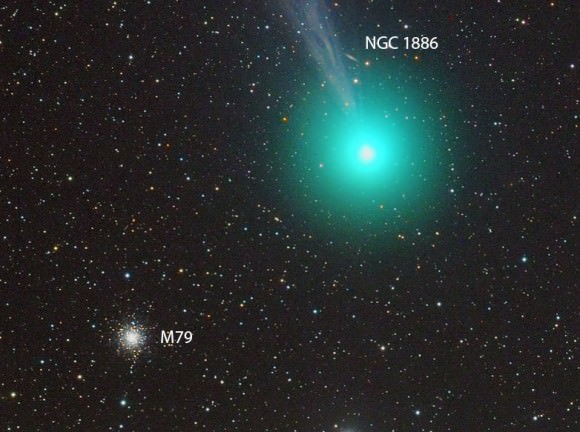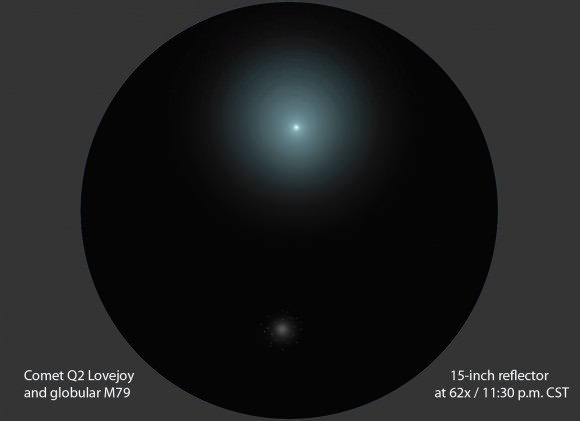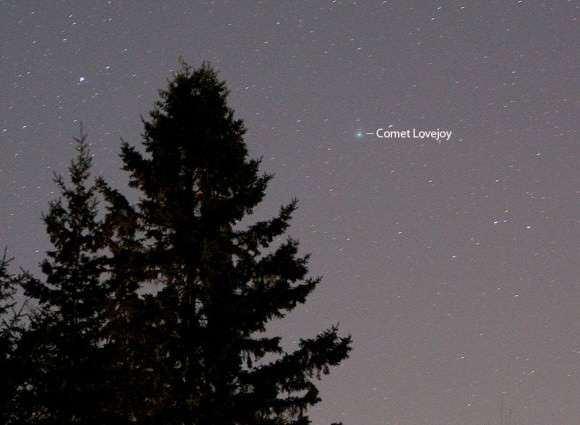Oh my, oh my. Rolando Ligustri captured this scene last night as Comet Q2 Lovejoy swished past the globular cluster M79 in Lepus. If you’ve seen the movie Wild or read the book, you’ll be familiar with the phrase “put yourself in the way of beauty”, a maxim for living life adopted by one of its characters. When I opened up my e-mail today and saw Rolando’s photo, I felt like the beauty truck ran right over me.

More beautiful images arrived later including this one by Chris Schur of Arizona.
Even with the Moon at first quarter phase, the comet was plainly visible in binoculars last night shining at magnitude +5. I used 8x40s and had no problem seeing Lovejoy’s blobby glow. With a coma about 15-20 arc minutes in diameter or more than half the size of a the Full Moon, it really fills up the field of view when seen through a telescope at low to medium magnification.

If you love the aqua blue hues of the Caribbean, Lovejoy will remind you it’s time to book another tropical vacation. In both my 15-inch (37-cm) and 10-inch (25-cm) reflectors, the coma glowed a delicious pale blue-green in contrast to the pearly white cluster. I encourage you to look for the comet in the next few nights before the Moon is full. Starting on January 6-7, the Moon begins its move out of the evening sky, giving observers with dark skies a chance to view Lovejoy with the naked eye. I’m looking forward to seeing its long, faint tail twist among the stars of Eridanus as the comet rapidly moves northward over the next week.

For a map on how to find the comet, check my recent article on Lovejoy’s many tails. Cheers to finding beauty the next clear night!

